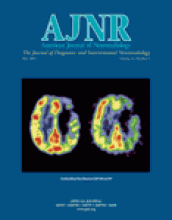Leonard E. Swischuk, Price $99.00. 149 illustrations. New York: Springer-Verlag; 2002
It is pleasing to review a well-written monograph such as Imaging of the Cervical Spine in Children by Leonard E. Swischuk, because when properly executed, these volumes impart easily digested, clinically relevant information. Radiologic evaluation of a child’s cervical spine whether by radiographic, CT, or MR findings is often difficult and fraught with pitfalls because of “apparent” abnormalities such as excessive movement of one segment upon another, unfused apophyseal centers, variations in vertebral column development, manifestations of spinal trauma, and congenital anomalies of the spine. So in this 141-page, well-illustrated book, Dr. Swischuk deals primarily with these issues.
The book is divided into six chapters, the first two of which concern developmental anatomy and normal variations of the cervical spine. These chapters (as most of the chapters) present the reader with information predominately in the form of images and drawings. That is, the written material has been kept to a minimum, with the important points emphasized with clear images. This has allowed the author to concentrate on the major teaching points, without diverging into extraneous material. Normal images that can be mistaken for trauma (fractures and subluxations) are well shown; this of course is a major issue in potential medical liability cases. The radiographs in these chapters deserve study and restudy. Normal ossicles, changing osseous patterns with age in flexion and extension views, focal normal angulation of one vertebral body on another, normal vertebral body “wedging,” apparent enlargement of the prevertebral soft tissues, among other subjects are dealt with succinctly. The first two chapters deal with normal findings that are “pseudosomethings” –ie, psuedofractures, psuedosubluxations, pseudoretropharyngeal abscess, pseudospinal canal mass, and so forth.
What is pleasing but unusual in medical writing is that Dr. Swischuk does not shy away from by using the first person in his descriptions, and this gives the monograph a personal flavor. For example, in discussing the relationship between C2 and C3; he describes how he deals with this situation by saying, “I have found it useful…. ” Nice touch!
Congenital anomalies are also dealt with in a straightforward, uncomplicated, and well-illustrated manner. Do not expect to see long discussions of embryology and developmental anatomy (although both are there in the earlier chapters) to lay the groundwork for anomalies. To this reviewer, the discussions and images at the craniocervical junction are the most important, because here is where most uncertainty lies; the plain radiographs and reformatted CT are well described and labeled clearly in this and other areas of the monograph.
In evaluation of trauma of the cervical spine, the spinal column findings are rightly stressed, although representative MR images do disclose some of the abnormalities one would expect in moderate to severe spinal injury. Other areas such as spinal infections, neoplasms, and histiocytosis are only superficially covered and to this reviewer’s eye, these areas could have been eliminated from work without loss of the main thrust of the book. It was as if these topics were thrown in as an afterthought; the text could have stood well without this last chapter. Not covered is postoperative imaging, but that subject was not part of the author’s intent.
For a short course in normal cervical spine imaging, variations of the normal, anomalies, and trauma, this book is recommended and would be an important volume to have on hand in a reading room when confusing spine images are reviewed. While, of course, all this information can be gleaned from other sources, Dr. Swischuk’s vast experience combined with a readable text makes this a valuable (and incidentally inexpensive) addition to a radiologist’s library.
- Copyright © American Society of Neuroradiology












